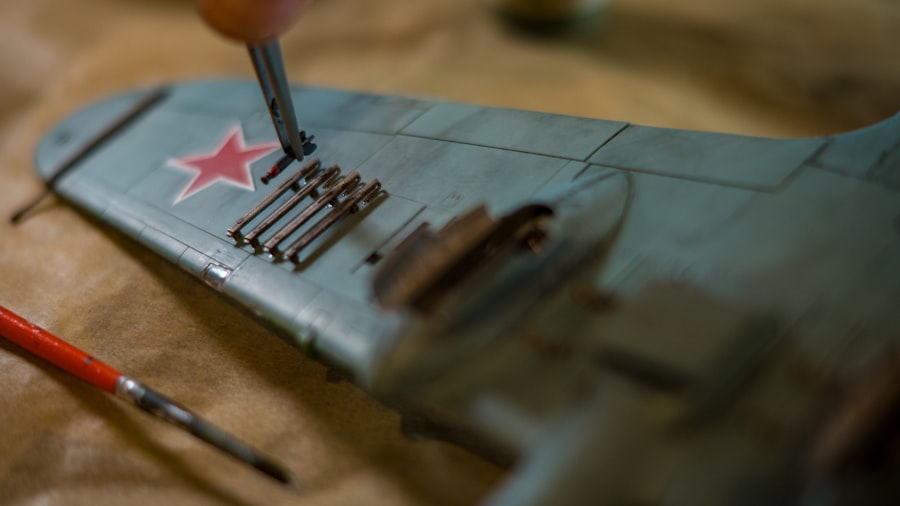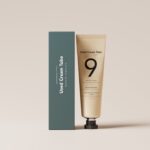When you consider laser hair removal, it’s essential to grasp how the process works. At its core, laser hair removal utilizes concentrated beams of light to target and destroy hair follicles. The pigment in the hair absorbs this light, which generates heat and ultimately damages the follicle, inhibiting future hair growth.
This method is particularly effective for individuals with dark hair and lighter skin, as the contrast allows the laser to focus more effectively on the hair. However, advancements in technology have made it possible for various skin and hair types to benefit from this treatment. Before undergoing the procedure, you should consult with a qualified professional who can assess your skin type and hair color to determine the best approach for you.
The treatment typically involves multiple sessions spaced several weeks apart to ensure that all hair follicles are effectively targeted during their growth cycles. During your appointment, you may experience a sensation similar to a rubber band snapping against your skin, but most find it tolerable. Understanding this process can help alleviate any anxiety you may have and prepare you for what to expect during your sessions.
Key Takeaways
- Laser hair removal targets hair follicles with concentrated light to inhibit future hair growth
- Shave the treatment area before laser hair removal to ensure the laser can effectively target the hair follicles
- Wait at least 48 hours after laser hair removal before shaving to avoid irritation and potential damage to the skin
- Avoid using depilatory creams immediately after laser hair removal as they can cause skin irritation
- Wait at least 10 days after laser hair removal before waxing or sugaring to allow the skin to heal and reduce the risk of irritation
Preparing for Hair Removal After Laser Treatment
Once you’ve completed your laser hair removal sessions, preparing for the aftermath is crucial for achieving optimal results. Initially, you should avoid sun exposure for at least two weeks following your treatment. Sunburned or tanned skin can increase the risk of complications and may hinder the effectiveness of the laser treatment.
If you must be outdoors, applying a broad-spectrum sunscreen with a high SPF is essential to protect your skin from harmful UV rays. Additionally, it’s important to refrain from using any harsh skincare products or treatments on the treated area for a few days post-treatment. This includes exfoliants, retinoids, and any products containing strong acids.
Your skin will be sensitive after the procedure, and using these products can lead to irritation or adverse reactions. Instead, focus on gentle cleansers and moisturizers to keep your skin hydrated and calm as it heals.
Tips for Shaving After Laser Hair Removal

After undergoing laser hair removal, you may wonder when it’s safe to shave again. Generally, you can resume shaving about 48 hours after your treatment, but it’s vital to listen to your body and assess how your skin feels. If you notice any redness or irritation, it’s best to wait a bit longer before picking up your razor.
When you do shave, opt for a clean, sharp razor to minimize the risk of nicks and cuts. To make the shaving process smoother and more comfortable, consider using a moisturizing shaving cream or gel. This will help reduce friction and protect your sensitive skin.
Always shave in the direction of hair growth to avoid irritation and ingrown hairs. If you experience any discomfort or notice unusual reactions after shaving, don’t hesitate to reach out to your skincare professional for advice.
Using Depilatory Creams Post-Laser Treatment
| Depilatory Cream Brand | Effectiveness | Skin Sensitivity | Duration of Hair Removal |
|---|---|---|---|
| Brand A | High | Low | 2 weeks |
| Brand B | Medium | Medium | 3 weeks |
| Brand C | Low | High | 1 week |
Depilatory creams can be an alternative method for hair removal after laser treatments, but caution is necessary. These creams work by breaking down the protein structure of the hair, allowing it to be wiped away easily. However, because your skin may be sensitive following laser treatment, it’s crucial to choose a gentle formula specifically designed for sensitive skin types.
Always perform a patch test on a small area before applying the cream more broadly. If you decide to use depilatory creams, ensure that you follow the instructions carefully. Leaving the cream on for longer than recommended can lead to chemical burns or irritation, especially on recently treated skin.
Additionally, avoid using these creams on areas that have been recently lasered until your skin has fully healed.
Waxing and Sugaring After Laser Hair Removal
Waxing and sugaring are popular hair removal methods that many people consider after laser treatments; however, they are not recommended immediately following such procedures. Both methods involve pulling hair from the root, which can irritate sensitive skin that has just undergone laser treatment. It’s advisable to wait at least four to six weeks after your last session before considering waxing or sugaring.
If you choose to go this route later on, ensure that your skin is fully healed and free from any irritation or sensitivity. When you do decide to wax or sugar, opt for a professional service that understands your recent laser treatments and can tailor their approach accordingly. This will help minimize discomfort and ensure that your skin remains healthy throughout the process.
Tweezing and Threading After Laser Treatment
Tweezing and threading are other methods of hair removal that may come to mind after laser treatments. While these techniques can be effective for shaping brows or removing stray hairs, they should be approached with caution post-laser treatment. Similar to waxing and sugaring, both methods involve pulling hair from the root, which can lead to irritation on recently treated skin.
It’s best to wait until your skin has fully recovered before resorting to tweezing or threading. Once you feel confident that your skin is back to normal, use these methods sparingly and only on areas that require precision grooming. Always ensure that any tools used are clean and sanitized to prevent infections or complications.
Post-Laser Hair Removal Skincare Tips
Taking care of your skin after laser hair removal is vital for maintaining its health and ensuring optimal results. One of the most important aspects of post-treatment care is hydration. Keeping your skin moisturized will help soothe any irritation and promote healing.
Look for gentle, fragrance-free moisturizers that won’t irritate your sensitive skin. In addition to moisturizing, consider incorporating soothing ingredients like aloe vera or chamomile into your skincare routine. These natural remedies can help calm inflammation and redness that may occur after treatment.
Furthermore, avoid hot showers or baths immediately following your sessions; instead, opt for lukewarm water to prevent additional irritation.
Maintaining Results After Laser Hair Removal
To maintain the results of your laser hair removal treatments, consistency is key. Regular follow-up sessions may be necessary depending on your individual hair growth cycle and hormonal changes. Many people find that they need touch-up treatments every six months to a year to keep unwanted hair at bay.
Additionally, adopting a healthy lifestyle can contribute significantly to maintaining results. Staying hydrated, eating a balanced diet rich in vitamins and minerals, and managing stress levels can all play a role in how your body responds post-treatment.
In conclusion, understanding the intricacies of laser hair removal and how to care for your skin afterward is essential for achieving the best possible outcomes. By preparing adequately before treatments and following proper post-care guidelines, you can ensure that your experience is as smooth as possible while enjoying the benefits of reduced hair growth in the long term.
If you are looking for more information on laser hair removal, you may want to check out this article on home fashion trends for laser hair removal. This article discusses how to incorporate laser hair removal into your daily routine and lifestyle. It provides tips on how to maintain smooth and hair-free skin after your laser hair removal sessions.
FAQs
What is laser hair removal?
Laser hair removal is a cosmetic procedure that uses a concentrated beam of light (laser) to remove unwanted hair. The light is absorbed by the pigment in the hair follicles, which damages the follicle and inhibits future hair growth.
How does laser hair removal work?
During laser hair removal, the laser emits a light that is absorbed by the pigment in the hair follicles. This damages the follicle and inhibits future hair growth. Multiple sessions are usually required to achieve long-term hair reduction.
Is it possible to get hair out after laser hair removal?
It is possible for some hair to grow back after laser hair removal, as the procedure does not guarantee permanent hair removal. However, the regrowth is usually finer and lighter in color.
How can I get hair out after laser hair removal?
If hair grows back after laser hair removal, it can be treated with additional laser sessions to target the regrowth. Alternatively, other hair removal methods such as shaving, waxing, or depilatory creams can be used.
Are there any risks or side effects associated with laser hair removal?
Some potential risks and side effects of laser hair removal include skin irritation, redness, swelling, and changes in skin pigmentation. It is important to consult with a qualified and experienced practitioner to minimize these risks.






